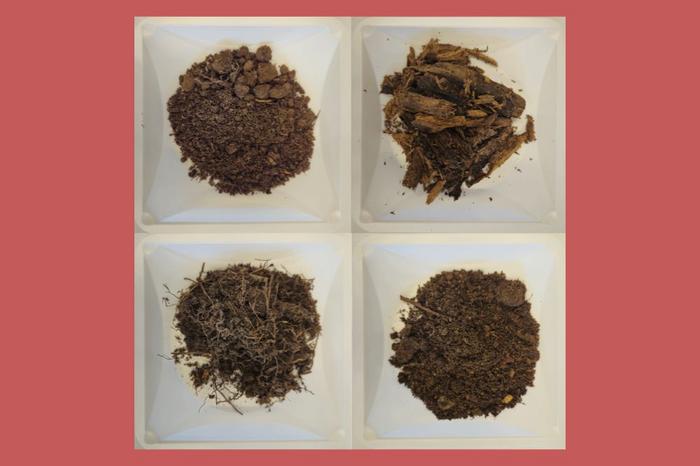![Low-Res_Brady_81325_HERO To find bioactive molecules with the potential to become new drugs less prone to antibiotic resistance, the researchers sequenced bacterial DNA extracted from soils from Rockefeller's field center in upstate New York. [Laboratory of Genetically Encoded Small Molecules at The Rockefeller University]](https://www.genengnews.com/wp-content/uploads/2025/09/Low-Res_Brady_81325_HERO-696x463.jpg)
Many of our frontline antibiotics originated from microbes, and as antibiotic resistance spreads and drug pipelines run dry, the soil beneath our feet has a vast hidden reservoir of untapped lifesaving compounds. However, most bacteria cannot be cultured in the lab, which means scientists can’t directly assess genetic diversity.
Researchers at the Laboratory of Genetically Encoded Small Molecules, Rockefeller University, have now developed a way to access this microbial goldmine. Their approach circumvents the need to grow bacteria in the lab, by instead extracting very large DNA fragments directly from soil, to piece together the genomes of previously hidden microbes, and then mine the resulting genomes for bioactive molecules.
Describing their development in Nature Biotechnology, the researchers report how, from a single forest sample, they generated hundreds of complete bacterial genomes never seen before, as well as two new antibiotic leads. The new technology offers a scalable way to scour unculturable bacteria for new drug leads—and expose the vast, uncharted microbial frontier that shapes our environment.
“We finally have the technology to see the microbial world that have been previously inaccessible to humans,” said Sean F. Brady, PhD, head of the Laboratory of Genetically Encoded Small Molecules at Rockefeller. “And we’re not just seeing this information; we’re already turning it into potentially useful antibiotics. This is just the tip of the spear.”
Brady and colleagues reported their work in a paper titled “Bioactive molecules unearthed by terabase-scale long-read sequencing of a soil metagenome,” in which they concluded “Our approach advances metagenomic access to the vast genetic diversity of the uncultured bacterial majority and provides a means to convert it to bioactive molecules.”
When hunting for bacteria, soil is an obvious choice. It’s the largest, most biodiverse reservoir of bacteria on the planet—a single teaspoon of it may contain thousands of different species. Many important therapeutics, including most of our antibiotic arsenal, were discovered in the tiny fraction of soil bacteria that can be grown in the laboratory. And soil is dirt cheap.
Yet we know very little about the millions of microbes packed into the earth. Scientists suspect that hidden bacteria may hold not only an untapped reservoir of new therapeutics, but clues as to how microbes shape climate, agriculture, and the larger environment that we live in. “All over the world there’s this hidden ecosystem of microbes that could have dramatic effects on our lives,” Brady commented. “We wanted to finally see them.” But as the authors noted, “The majority of bacteria, however, remain recalcitrant to laboratory culture, preventing direct analysis of their genetic diversity.”
While metagenomics can provides access to the genetic diversity of uncultured bacteria through analysis of DNA extracted from whole microbial communities, the team continued, “Exploration of soil microbiomes presents a particularly difficult challenge because of not only the immense microbial diversity they contain but also the challenges associated with isolating high-quality metagenomic.”
Through their newly research the team weaved together several approaches. First, the team optimized a method for isolating large, high-quality DNA fragments directly from soil. Pairing this advance with emerging long-read nanopore sequencing allowed Jan Burian, PhD, a postdoctoral associate in the Brady lab, to produce continuous stretches of DNA that were tens of thousands of base pairs long—200 times longer than any previously existing technology could manage. “The increased read size led to assemblies of contiguous DNA sequences on the order of megabase pairs, including hundreds of complete circular metagenomic genomes,” they reported.
Soil DNA contains a huge number of different bacteria; without such large DNA sequences to work with, resolving that complex genetic puzzle into complete and contiguous genomes for disparate bacteria proved exceedingly difficult. “It’s easier to assemble a whole genome out of bigger pieces of DNA, rather than the millions of tiny snippets that were available before,” Brady said. “And that makes a dramatic difference in your confidence in your results.”
Unique small molecules, such as antibiotics, that bacteria produce are known as natural products. To convert the newly uncovered sequences into bioactive molecules, the team applied a synthetic bioinformatic natural products (synBNP) approach. They bioinformatically predicted the chemical structures of natural products directly from the genome data and then chemically synthesized them in the lab.
Brady describes the method, which is scalable and can be adapted to virtually any metagenomic space beyond soil, as a three-step strategy that could kick off a new era of microbiology: “Isolate big DNA, sequence it, and computationally convert it into something useful.”
With the synBNP approach, Brady and colleagues managed to turn the genetic blueprints from uncultured bacteria into actual molecules, including two antibiotic molecules. Applied to their single forest soil sample, the team’s approach produced 2.5 terabase-pairs of sequence data—the deepest long-read exploration of a single soil sample to date. Their analysis uncovered hundreds of complete contiguous bacterial genomes, more than 99% of which were entirely new to science and identified members from 16 major branches of the bacterial family tree.
The two lead compounds discovered could translate into potent antibiotics. One, called erutacidin, disrupts bacterial membranes through an uncommon interaction with the lipid cardiolipin and is effective against even the most challenging drug-resistant bacteria. The other, trigintamicin, acts on a protein-unfolding motor known as ClpX, a rare antibacterial target.
Brady emphasized that these discoveries are only the beginning. The study demonstrates that previously inaccessible microbial genomes can now be decoded and mined for bioactive molecules at scale without culturing the organisms. Unlocking the genetic potential of such “microbial dark matter” may also provide new insights into the hidden microbial networks that sustain ecosystems. “By achieving a substantial increase in read length, we show that it is possible to resolve complete contiguous metagenomic genomes from a complex soil sample,” they stated. “This not only advances our understanding of the composition of environmental bacterial communities but also provides a deeper understanding of encoded biosynthetic potential.”
Burian added, “We’re mainly interested in small molecules as therapeutics, but there are applications beyond medicine…Studying culturable bacteria led to advances that helped shape the modern world and finally seeing and accessing the uncultured majority will drive a new generation of discovery.”
The team wrote in summary, “By combining improved long-read access to metagenome sequence space with synBNP discovery, we established a pipeline to leverage the vast genetic diversity of microbial dark matter for the systematic detection, synthesis and screening of previously inaccessible bioactive molecules.”



